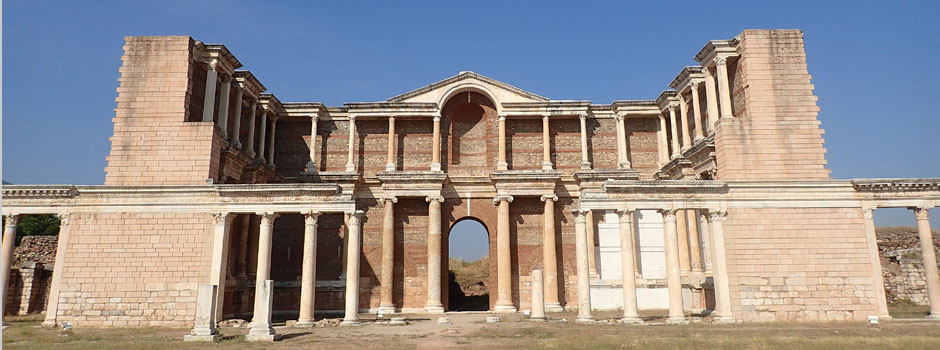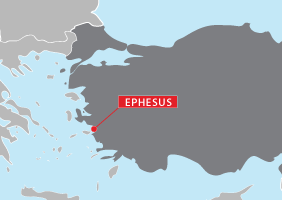
Sardes was the capital of the Lydian Kingdom, going back to the First Millennium BCE. It was the city of King Croesus, last King of the Lydian Kingdom who is (in)famous for his wealth; he consequently entered the English language as describing one who is very rich and who flaunts his riches. The city owed much of its wealth to the gold found in the nearby Pactalos River. Heredotos, the ‘Father of History’, wrote that coins were first minted in Sardis from a metal called electrum, a mixture of gold and silver. The value of these coins was guaranteed with the gold in the state treasury. The practice of dyeing wool also originated here.
Sardes is important for both Christians as it is one of the Seven Churches of Revelation, and also for Jews as it has one of the best preserved synagogues of antiquity. Some of the sites that you will visit include the Temple of Artemis, which was later converted into a church after Christianity was accepted as state religion. You will also see parts of the original Royal Road which started in Persia and ended in Sardes, as well as the impressive gymnasium that has been recently restored. One of the highlights of Sardes is the very well preserved synagogue and the attached shops that belonged to the people who worshipped there.
You can also see Bin Tepe, which means “Thousand Mounds”. These mounds, called Tumuli, were the ancient burial tombs of Lydia, and can be seen from far away. In fact, it is the largest tumulus cemetery in Turkey. There are approximately 115 of these mounds in Sardes, the largest being the tumulus of Alyattes, King of Sardes in the 6th Century BCE, which is also the largest tumulus in the world. It is so historically important, that Sardes and Bin Tepeler are part of a tentative consideration list to qualify as a World Heritage Site.
There will be a shopping opportunity before returning to your cruise ship.

Photos by Guillaume Capron
Leave a Reply
You must be logged in to post a comment.
